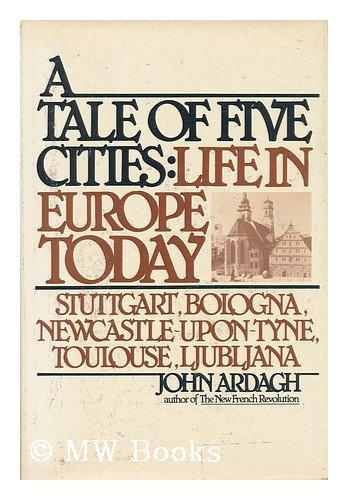
Articles about Slovenia written by foreign observers tend to be big news in a country that is always curious about how outsiders see it. It was more than three decades ago, however, that a British journalist penned of account of Slovenia that continues to rank as one of the most incisive profiles of the small country between the Alps and the Adriatic.
Ardagh first came to Ljubljana in the early 1970s, while he was researching a book about Europe, and encountered a shabby city: “On the day of my first arrival, in March, it had been snowing and grey slush law unswept-away in the streets.” He noticed that the facades of buildings were “as gloomily unkempt as elsewhere in Communist Europe.” Yet he fell in love with Ljubljana and began a relationship with Slovenia that lasted for decades.
In 1979, he published his book – titled A Tale of Five Cities: Life in Europe Today. Along with profiles of four other European cities, the book included an in-depth study of Ljubljana and Slovenian society in the waning years of Tito’s rule.
Ljubljana as seen by Ardagh was a city of contradictions, and his observant eye picked up on many of those nuances. It was a grey city with shop signs that reminded him of “the worst of the early 1950s”, but its citizens nevertheless lived a life different from their counterparts elsewhere in Eastern Europe. Unlike the drab exteriors, the interiors of Ljubljana’s buildings indicated “a modest affluence: go inside a flat or office and you will often find it neatly and smartly furnished.”
Despite the heavy political repression, Ardagh noticed that ordinary Slovenians increasingly looked towards the West for inspiration. He observed shiny new Mercedes cars bought by Slovenes working abroad, and remarked on the locals’ new preference for elegant, privately owned restaurants in place of the state-owned establishments with poor service and bland food. He was surprised to see slick, Western-influenced television commercials for consumer products, so unusual for a Communist society.
Ardagh recognized that Slovenia under Communist rule was no paradise. Visiting a factory in suburban Ljubljana, he noted “the out-of-date-looking machinery, shabby, unmodernised offices, and a seemingly lackadaisical though cheerful atmosphere.” He also wrote about anti-religious discrimination; one teacher told him that she went to church in another community because she feared that her Christian faith could endanger her job.
Despite the political oppression, however, Ardagh fell in love with Ljubljana and Slovenia. He wrote that out of the five towns analyzed in his book, he had come to like Ljubljana the most. He was impressed by the eagerness of the locals for culture, from theatre to poetry, their talent for foreign languages, and their “mixture of local pride and international spirit.”
Ardagh continued to visit Slovenia country long after his book was published. In the mid-1990s, shortly after Slovenia attained its independence (which, according to Ardagh, “it so richly deserved”), he wrote long articles about the country for the travel pages of British newspapers. He revisited Ljubljana, praised the charms of Grand Hotel Toplice in Bled, vividly portrayed the bucolic countryside under the Julian Alps, and marveled at Piran, which he described as a “less-spoilt St. Tropez.”
John Ardagh, who was smitten by Slovenia when it was still an obscure art of Yugoslavia, died in 2008. He was 79 years old.

































































